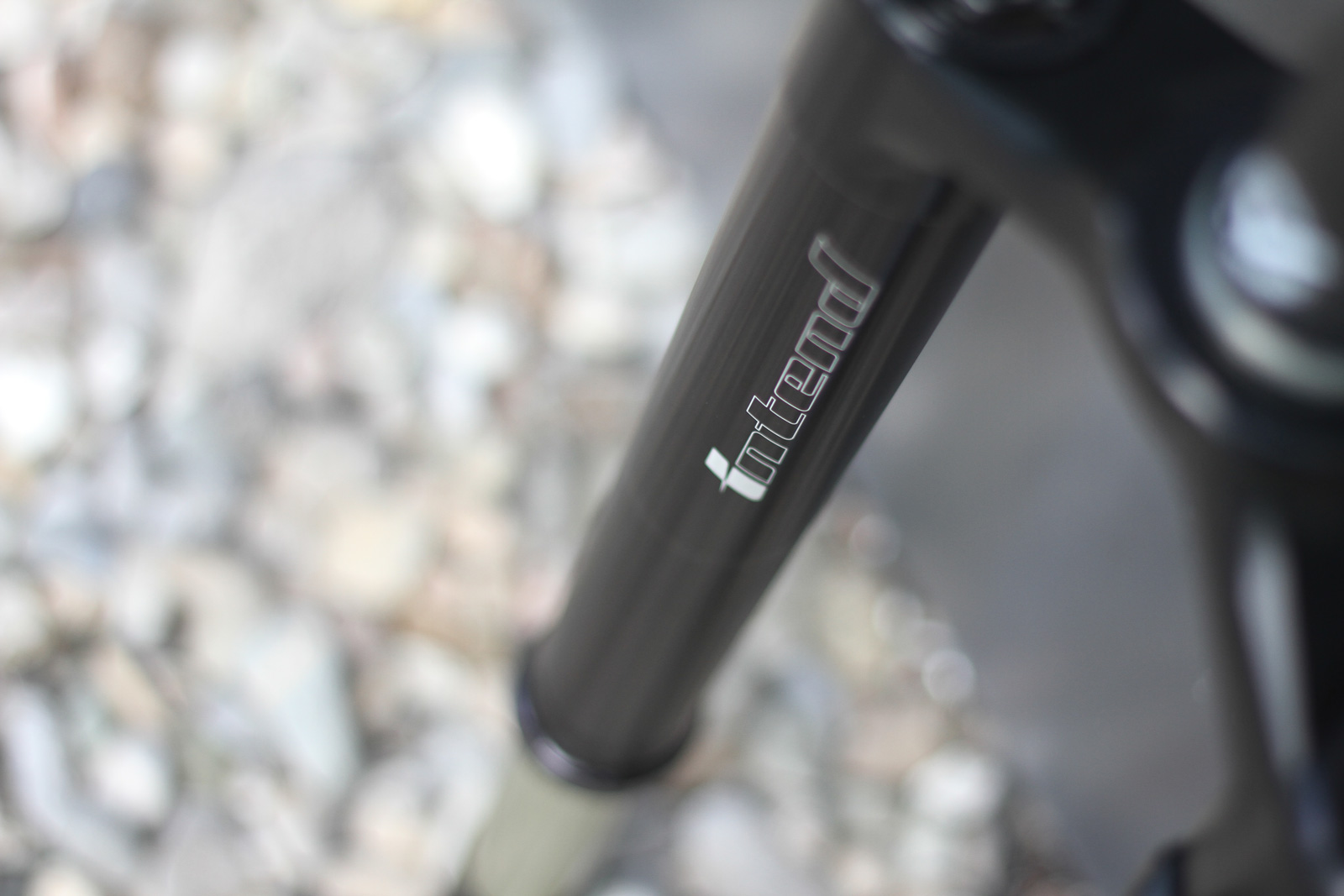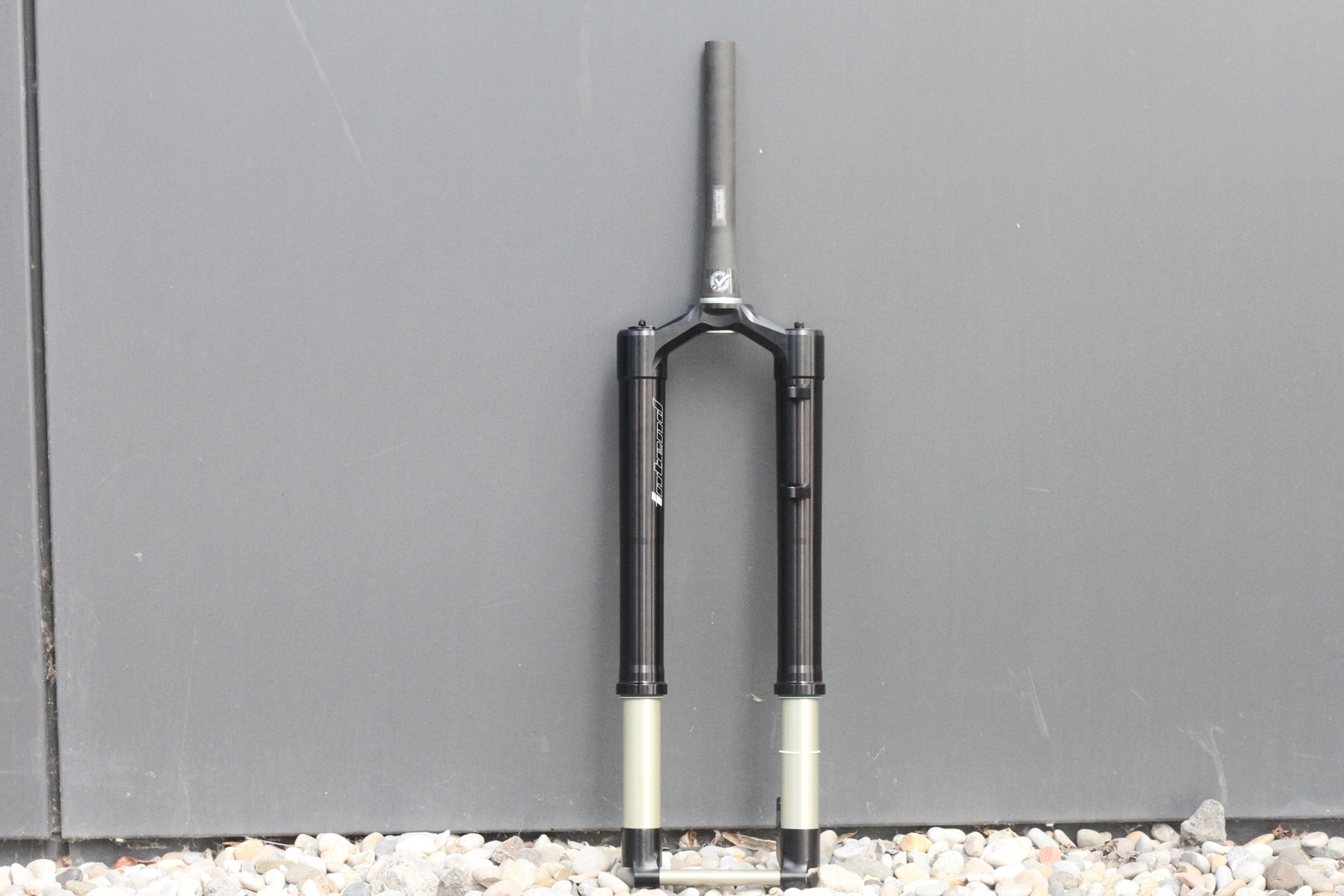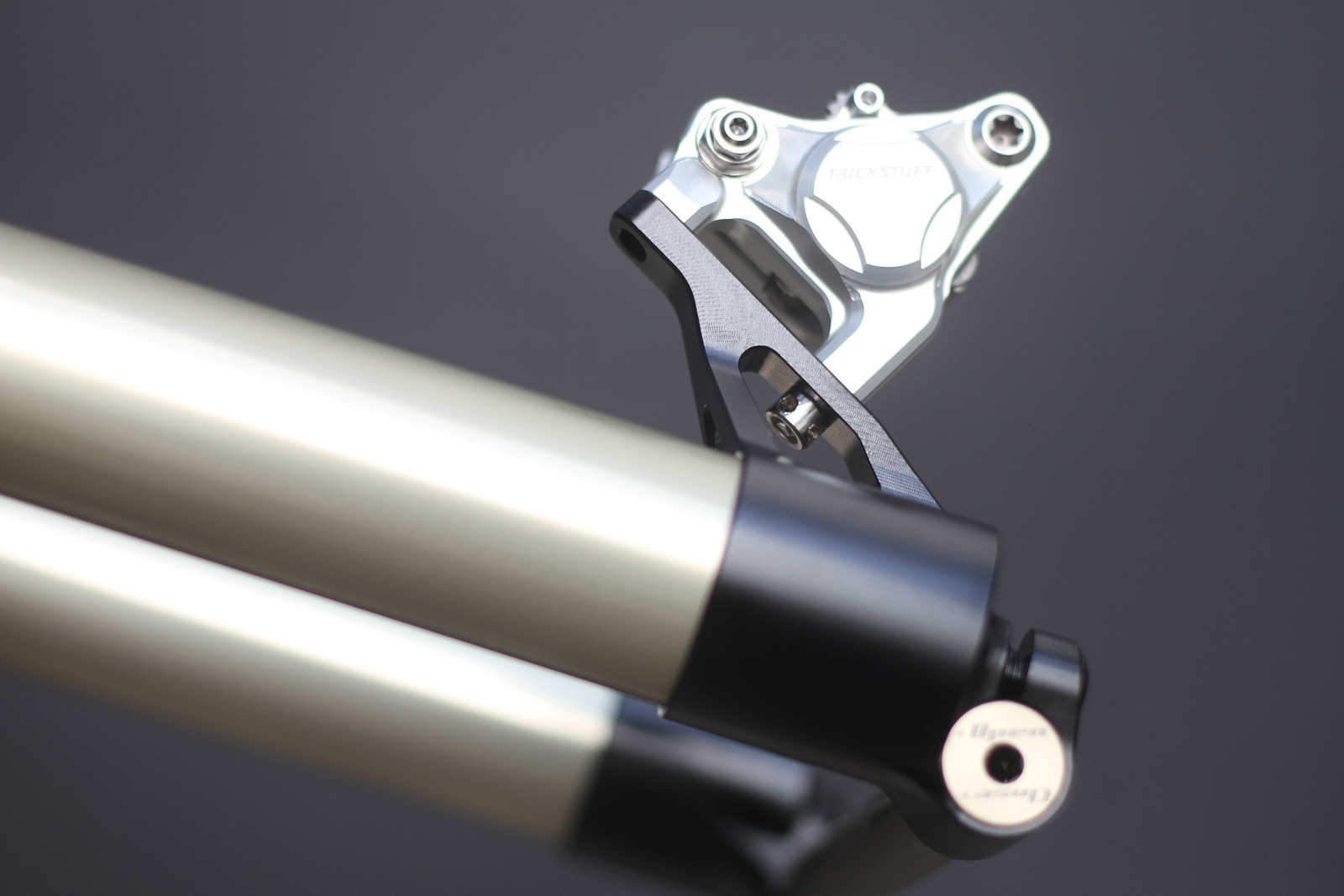The RockShox SID Ultimate no longer holds the accolade for the World’s Lightest 120mm Fork; that now goes to Cornelius Kapfinger’s Intend Samurai CC, weighing a claimed 1,385g – that’s around 150g lighter than the aforementioned. Of course, it wouldn’t really be an Intend fork if it didn’t rock an inverted design more commonly seen on motorbikes. The lack of an arch bridging the what-would-be lowers helps keep the weight down, but Cornelius has some other tricks up his sleeve here, too.
The Intend Samurai CC is one of two new 120mm forks with 35mm stanchions from Intend. While the CC, which stands for Cross Country, runs a carbon steerer tube, carbon cable guides, and gets some unseen internal drilling of the parts to reduce weight further, the heavier Samurai XC runs a regular aluminum steerer, and aluminum cable guides, and forgoes the additional internal machining. Nevertheless, it still comes in lighter the SID Ultimate at a claimed 1,495g.

Intend Samurai 120mm Forks
How has Intend made the Samurai CC and XC forks so light? Largely because the fork has very minimalistic dropouts that have almost zero offset, thus less material. So, how can Cornelius reduce the weight at the dropouts without a consequential reduction in overall fork stiffness? A side-on view of the fork gives some indication.
Looking only at the dropouts, it would seem the fork has next-to-zero offset, but this is not the case. The profile of the fork reveals an angled bridge design that puts the fork at a slacker head angle than the headtube itself. It is this angle here that introduces the 44mm offset, and allows Intend to cut down the size and weight of the dropouts, saving around 50g.
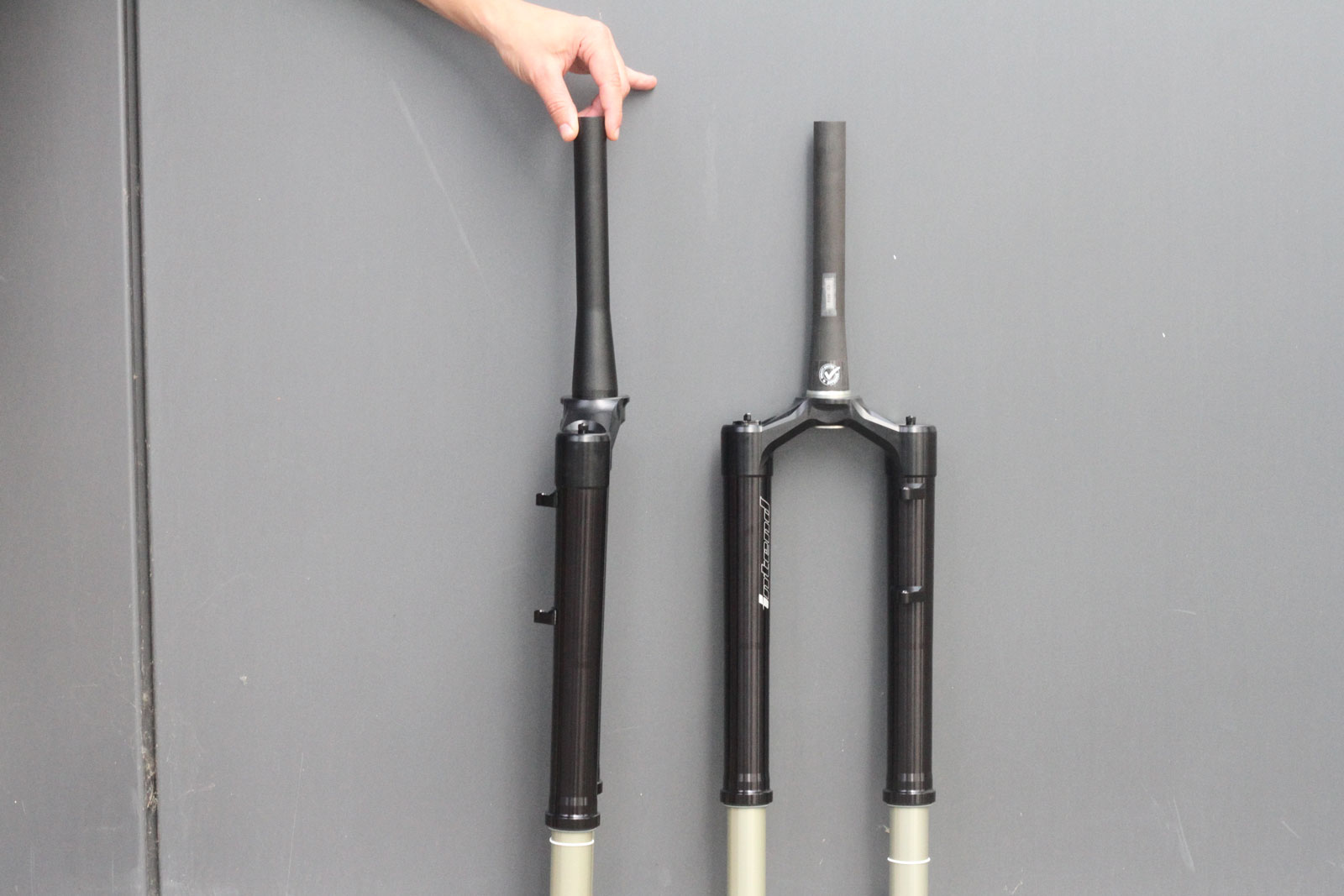
Importantly, the Intend Samurai doesn’t change the bike’s actual head angle. The front wheel axle should still be around the same distance out front of the head tube. The only consideration there is the axle-to-crown height; here it is 531mm, the exact same as the RockShox SID.
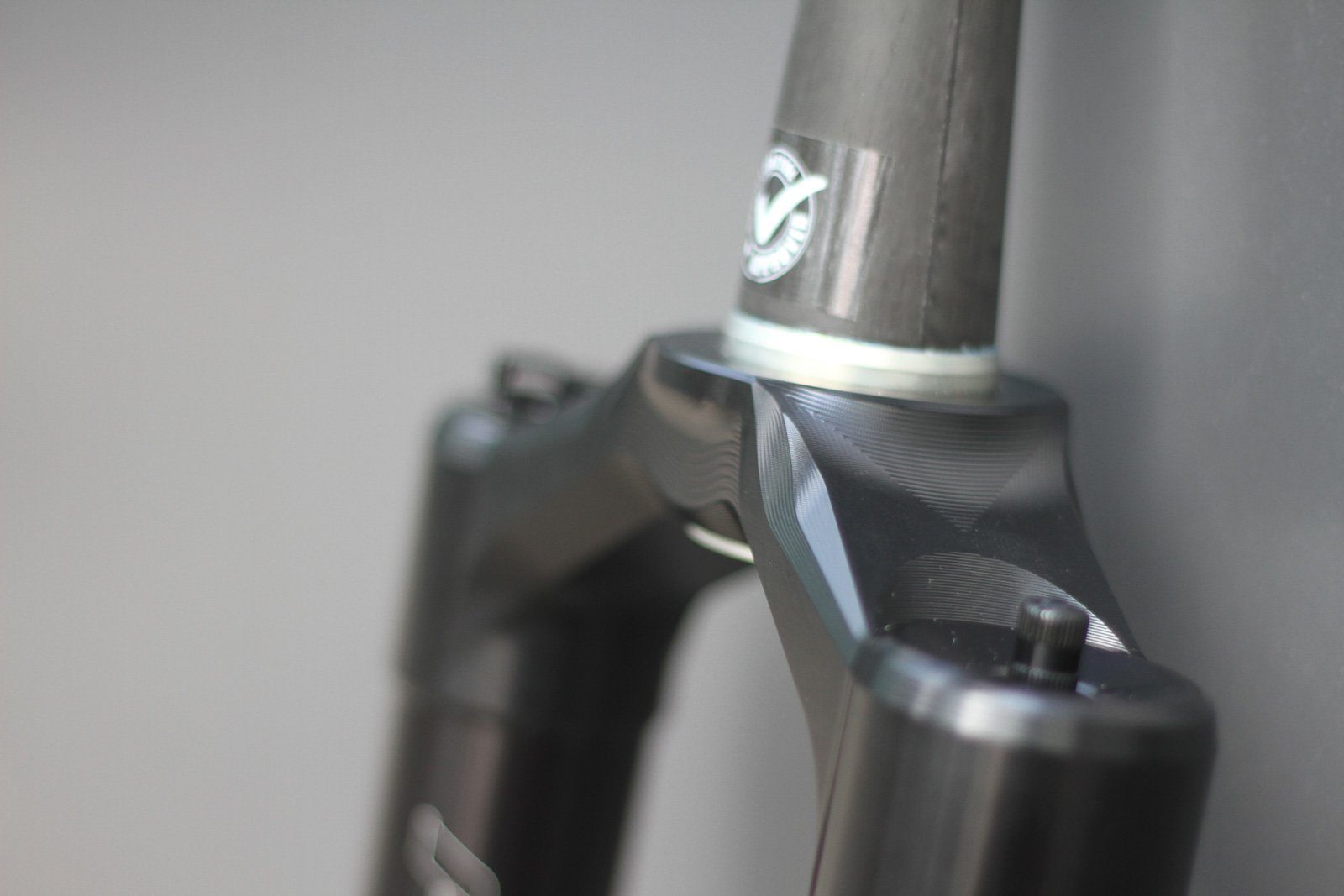
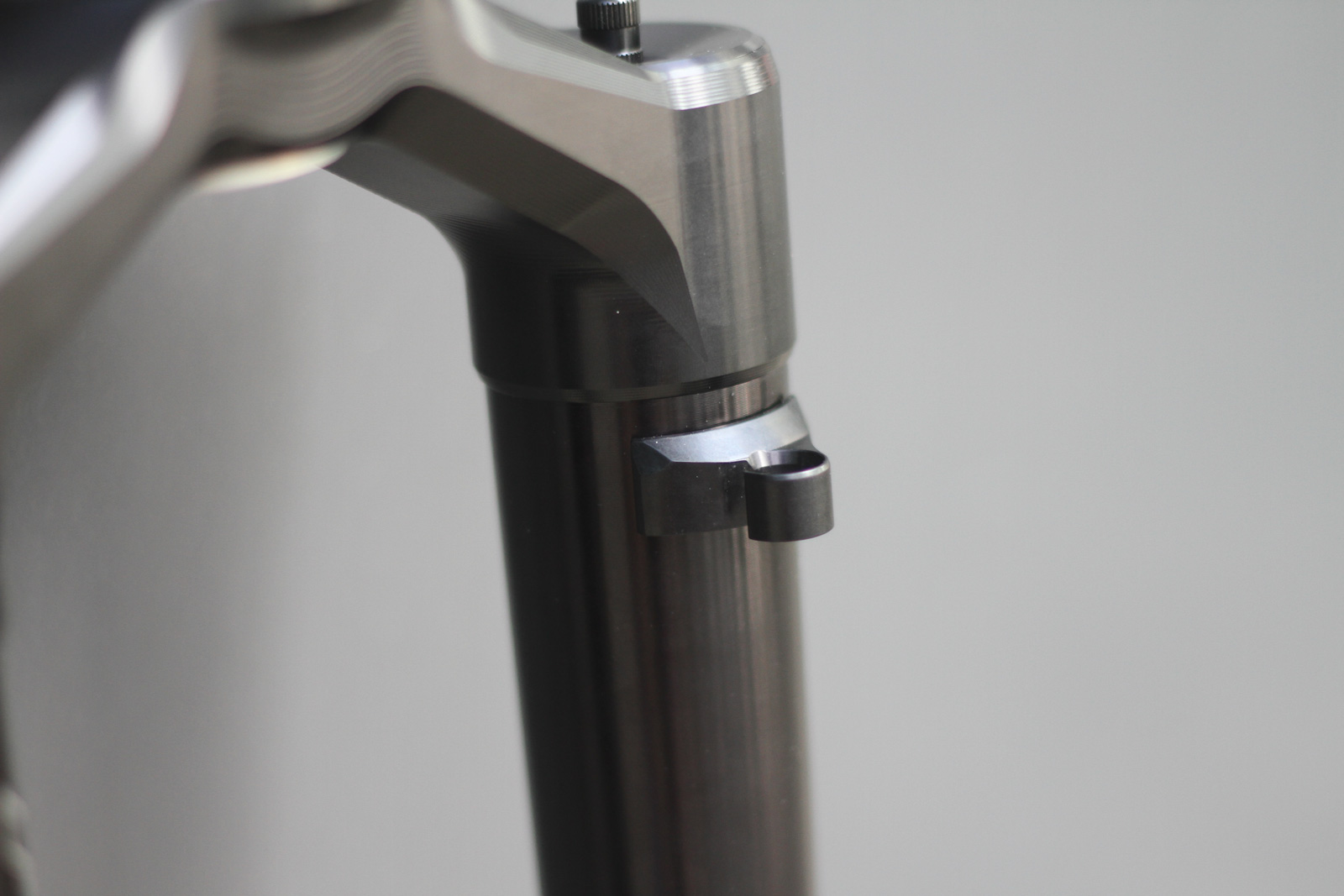
The Samurai forks run a flat mount for the brake caliper, designed to work directly with a 180mm rotor. The tight spacing means the lower caliper bolt cannot be tightened in the traditional way. You’ll see the bolt head has a hole running through it – that’s to allow use of a 2.5mm Allen key for tightening the bolt from the side.
Intend’s Samurai CC and XC 120mm travel fork are designed to run the RockShox Race Day damper, the one that comes stock inside the SID Ultimate fork. Those retail at $269 USD, so you’ll need to remember to add that that to the price of the fork when making your purchasing decisions, which brings me to…
Pricing & Availability
The Intend Samurai CC and XC forks retail at 1,949 € and 1,649 €, respectively. There is a gravel version, too! Though, it wasn’t in attendance of the show. That one is the Intend Samurai GR with up to 50mm travel; claimed weight for that one is 1,440g. The GR version for Gravel retails at 1,649 €. All will be available to order this coming Fall. Customers will need to provide Cornelius with the RockShox Charger Race Day damper for installation.
